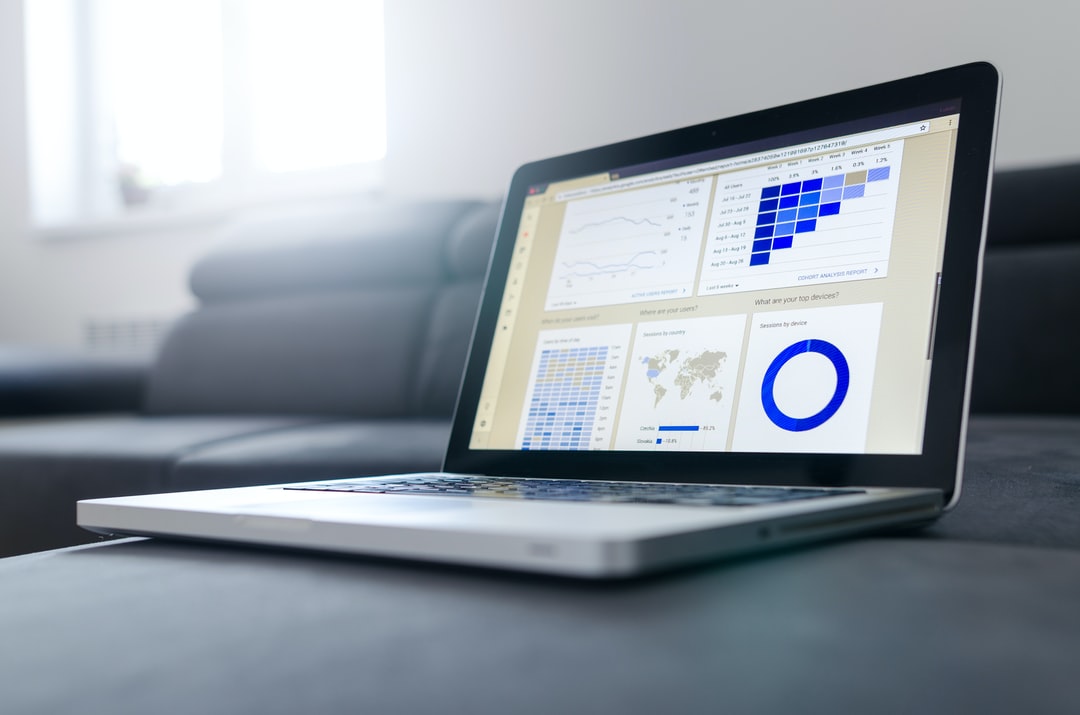7 Music Analytics Tools & Chart Trackers That Actually Work

*This article may contain links to affiliate products & services. We have reviewed these services to try and ensure the highest quality recommendations*
Written by Ramsey Brown.
If there is something everyone can agree on and that the last few years has definitely confirmed, it’s that we live in an era of digitalization. Our entire lives have been surrounded by technology and the evolution of intelligence has undoubtedly made human lives easier.
Whether it’s work, research, listening to music or sharing it, conversations with family and friends at a distance, finding a partner, shopping, paying bills, and almost anything else you can think of can be done with ease from a computer or smartphone device. Obviously this is to our advantage, but there are always going to be disadvantages accompanied as well.
What is the main drawback of this massification of digital media? The lack of control. Before, when everything was done in an analog and manual way, people were the ones responsible for what was happening and its outcome. Now with the internet, everything has gone out of our hands. This doesn’t mean it’s detrimental, but it does complicate how different work sectors are monitored and controlled. Many have come to depend on online resources for growth, such as the music industry and the development of music streaming platforms.
Spotify, Youtube, Apple Music, and now even TikTok have almost become a necessity for artists to use in order to make themselves known across the world. Before technology took over, musicians we’re constantly travelling, spending millions of dollars on advertising campaigns, and focusing on live performances to make ends meet. Online platforms have now helped artists build their brand and become known within the industry, even on minimalistic budgets.
However, as artists we know this isn’t as easy as it seems. Moreover, artists need access to their statistics on these platforms in order to understand their audience and continue their growth in the music industry. This can be a complicated task but ironically enough, technology has made understanding technology even easier. With music analytic tools, artists can receive accurate data and information regarding their career, websites, fans, people’s opinions, and much more. All of this information is simplified through charts and tracking tools to make an artist's life easier and the path to fame more feasible.
If you want to know more about different current music analytic tools and the benefits they can offer to you and your music career, then you’ve landed on the right page. We’ve found and listed the 7 best music analytics tools that today’s artists can use to get control over their data and use it to their professional advantage.
7 Best Music Analytic Tools & Platforms
If you want to know more about different current music analytic tools and the benefits they can offer to you and your music career, then you’ve landed on the right page. We’ve found and listed the 7 best music analytics tools for today’s artists to gain control over their data and use the information to their professional and artistic advantage.
1. Recordlabel.ai
Recordlabel.ai is more than a music analytics tool. It is an all-in-one platform to help artists make music faster and market music smarter.
Their music analytics tool, Playlist IQ, functions also as a contact info finder for Spotify playlist owners.
Playlist IQ is most focused on growing your streams on Spotify. They have a built in streaming estimator that pulls data from hundreds of existing Spotify playlist placements, then uses that data to estimate streams on lists.
Think of it like how real estate companies will use comparable houses to estimate the value of your home.
You can also find playlists based on how many followers per day the list is growing or declining.
Again, this tool is most useful for those who want to actually grow their streams through playlisting on Spotify.
2. Youtube Studio
According to reports from the IFPI, Youtube is the most used streaming platform worldwide and accounts for more than 46% of all songs and videos streamed online. This is more than all other streaming platforms combined. With this information, it is logical that one of the main music analysis tools you can use is offered by the streaming website itself, Youtube Studio.
Through this tool you can obtain real-time data on the number of people who watch your Youtube videos, the location, demographic, and psychographic information of the people who stream and follow you, the watch time of viewers in hours, traffic sources and impressions, similar channels to your own, and overall audience engagement, plus much more.
Youtube Studio is considered by many as the most important tool to better understand your fans and to know exactly what your growth is worldwide, in order to create new video marketing strategies and continue improving your popularity and engagement.
Undoubtedly, it’s necessary for artists to stay up to date with your statistics about your music and music videos. Even if you only have one video posted on Youtube, you need to be using this tool.
3. Next Big Sound
Similar to Youtube Studio, Next Big Sound is a music analysis tool created by Pandora, the most important interactive radio platform in the USA. Next Big Sound is able to provide real-time data on your performance as an artist on its platform and the other social networks you have associated with it such as Twitter, Facebook, TikTok, etc.
With this tool you will be able to have first-hand information of your performance on Pandora, having exact figures of the number of playlist views and discovery, engagement metrics of Pandora users and their most relevant demographics, as well as notifications and weekly performance insights. Moreover, this platform is also capable of generating real-time statistics of the performance of all your main social network partners. The result of this tool is really satisfactory and best of all is free to use.
4. Chartmetric
If you are looking to gain maximum information with maximum accuracy regarding your music analytics and data, we definitely recommend you start by using this revolutionary music analytics tool — Chartmetric.
What makes Chartmetric different from the rest is that it not only provides you complete data on the main streaming platforms in real time, but it also gives you data from over 300 active radio stations in the U.S. and even your progress on all the social networks that you have registered within the platform. It is one of the few tools that allow artists to have a real balance of their career within the entire music industry, through sophisticated graphs, statistics and data sources that will allow you to carefully analyze your progress on different platforms.
Another great advantage to Chartmetric is that it shows information on overall industry trends and provides semi-annual ‘breakthrough’ charts of which artists grew the most per 6 months, what platforms have gained the most recent traction and popularity, ‘music-trigger’ cities, genre growth and performance, and overall predictions about where the music industry is headed in the future.
5. Awario
Do you need a tool that allows you to analyze the reach of all your advertising campaigns and helps you get an idea of how important and "viral" you are as an artist on the main social networks? Then you should consider starting to use Awario, an infallible digital tracking tool that is very useful for today's artists.
Although Awario is not able to provide you with useful data about your growth in social networks on Spotify or Youtube specifically, it does allow you to monitor how you are being searched for or mentioned on the overall internet spectrum. Awario uses their advanced tools to gather information on how many times you are mentioned on the internet, the type and tones of conversations your name appears in, keywords surrounded around your brand, locations and languages of your mentions, and your most successful sources where people are talking about you the most.
Though it seems a bit creepy when you think about it in the grand scheme of things, this tool is extremely powerful for musicians and any other business entity to gain insight on quite literally what people are saying about you. One of the most beneficial things for a business or brand to know and understand is the public’s opinion surrounding them. With this tool, you can track your online presence and how people are responding to your music, so you can better improve your craft in the future.
6. Soundcharts
Soundcharts is another one of the basic tools within the elementary kit of music analytics that any artist or aspiring musician needs nowadays. Through this platform, musicians will be able to have detailed information about their progress as artists in the main social networks and music streaming platforms like Spotify, Apple Music and Deezer.
With Soundcharts analysis, you are able to receive important data such as the consumption of your music on various social platforms, your audience and their demographics, activity on main playlists and trending charts, track your competitors, and radio airplay monitoring from more than 1500 FM/AM radio stations.
7. Your Distributor's Dashboard
Whether you use TuneCore, DistroKid, CD Baby, or any other music distributor, you will be able to access certain data and analytics through your dashboard within the platform. Unlike the other analytic tools mentioned above, your distributor's dashboard will not give such precise information, but more generalized data on your artistic progress.
The tool will aggregate data from across the DSP and the major virtual music storefronts, giving a broad view of audience levels on the most popular streaming platforms, audience demographics and will also data on what matters most to an artist, the total number of recorded sales.
Wrapping Up
Understanding analytics and using the right tools to access such data is extremely beneficial and quite truthfully, almost necessary in order for an artist to succeed in today's music industry. With these powerful insights on your music, audience, and overall engagement, it allows you to optimize your online marketing strategy and identify your strengths and weaknesses, along with what you should continue or change in the future.
When discussing data, analytics, and metrics, it seems to be a very boring or confusing concept to most anyone. However, these 7 tools mentioned above make it easy and convenient for any artist to gather valuable information that could ultimately be crucial to the overall success of his or her career. So what are you waiting on? Go try out these trackers and let us know what you think or find in the comments below!
When your song is ready to go, it's time to start promoting it to potential fans! Omari has the best organic promotion services money can buy. With packages for Spotify, TikTok, Instagram, and YouTube, we will get your music the traffic and attention it deserves! Click below for more information.
SPEAK YOUR MIND
Leave a Reply
How This INDIE Artist Got Over 67,598,275 Streams On ONE Song
Join the No-Nonsense Music Marketing Newsletter to get the most valuable weekly case studies and strategies to grow your music business!




3 replies to "7 Music Analytics Tools & Chart Trackers That Actually Work"
I agree, Viberate’s the best!
https://analytics.viberate.com/
iMusician’s “Music Analytics” is my fav: https://imusician.pro/en/products/music-analytics-streaming-revenue-data
My favorite is definitely Viberate! https://www.viberate.com/